Finding the Perfect Rain Jacket and How To Care for It
This summer while we were on the coast of Alaska I spent a lot of time in a hardshell. During one of our backcountry trips a storm rolled in that helped me discover that my jacket is in fact… not waterproof anymore. It was a scary realization because all of my warm layers ended up getting wet. I was only able to stay warm if I was moving or in my sleeping bag and we had no way of leaving because the float plane couldn’t pick us up until we had clear weather.
As scary as the situation was, my experience in the backcountry kept me calm and focused on how to get through the situation. Now with hindsight, it’s important to look back and see what can be learned from that experience to be sure that it never happens again. Today we will be talking about hardshells and rain jackets! I want to go into detail about what jacket I had, why it failed, how to pick the right jacket for you, how to care for your new jacket to be sure it stays waterproof, AND some crowd suggestions from all of you!
Though this blog post was made in partnership with REI, the opinions are entirely our own.
Please note: The links provided in this blog post are affiliate links. If you end up purchasing some of these pieces of gear we get a very small portion of the sales. Thank you as always for supporting us and our life on the road, it gives us the opportunity to share so extensively with you all!
My Old Jacket
Let’s start with my old jacket, and why it failed.
For the last 11 years, I’ve been wearing an Arc’teryx Beta AR. I got it as a Christmas gift from my parents when I started spending a lot of time outdoors after I graduated from college. It’s been a loyal companion of mine ever since and it’s been very good to me. I loved that jacket because it was water-resistant and served as an excellent windbreaker. I’ve even added layers under it to make it my winter jacket. Its versatility has made it the perfect jacket to have on the road to cover me in a lot of different environments without ever being redundant.
However, over the last few years, it’s noticeably become less water-resistant, which is normal for a jacket of its age. When I noticed this decline I started treating it (which we will get into more later), but each time it seemed to be less effective. Ultimately, I don’t think I realized how compromised the jacket was until I found myself in a more “extreme” situation. I chalk that failure up to my lack of proper care in its early years and its age.
I still would highly recommend this jacket because of how good it’s been to me for 11 whole years. It’s comfortable, durable, technical, versatile, and if you take care of it better than I did, it will take care of you for a long time to come.
What to Look For In a jacket
If you’re on the market for a new rain jacket there are a few key things that you will want to keep in mind when comparing your options. They are as follows:
Rain jackets vs Hard shells: At the basic level, rain jackets have a 2 layer construction and hard shells are often made of three layers. Rain jackets will work for things like skiing but are geared towards being a three-season jacket. Hard shells however, are typically packed with features and offer greater durability. Hard shells are better for activities where durability is more of a factor. Personally, we always wear hard shells as our rain jackets for their overall versatility.
What you will be doing in your jacket: Climbing, hiking, backpacking, running, or commuting? There are so many great rain jackets out there and many are made with certain activities in mind that will suit you better than others.
The severity of the weather you frequently find yourself in: Jackets also come in a variety of weights based on weather. For instance, Arc’teryx makes jackets in three different levels. LT, which stands for lightweight. AR, which stands for all around. SV, which stands for severe weather. If you live in Alaska, I wouldn’t recommend the LT weight. Instead, you should be looking more in the SV range.
Hood design: Will you need to wear a helmet of any kind under the jacket?
Your Suggestions
Once we got out of the backcountry I reached out to you all via Instagram to ask for some different rain jacket suggestions to look into in my quest for a new rain jacket. Here is what you all recommended and why:
Black Diamond Liquid Point Shell
Great price point ($199) for a Gore-Tex jacket. It has tons of great reviews. People seem to like it because it’s a durable, ultralight hard shell. I read one account of someone who does a lot of backcountry skiing in wooded areas and has had many close encounters with trees and has never gotten a tear.
Black Diamond Helio Active Shell
Another ultralight option designed with winter conditions in mind. The Helio Active Shell uses Gore-Tex Active which is a 3-layer fabric that provides breathability all while being windproof and durable. It also has Gore-Tex C-Knit which replaces the usual crispness of a hard shell with a quieter overall construction, which frankly I didn’t even know was possible. In my experience, the Black Diamond jackets are shorter in the torso than Arc’teryx’s construction. Just something to keep in mind when making a decision for your body.
Outdoor Research Foray Jacket
This jacket appears to be on the lighter side and uses Gore-Tex 2-layer shell fabric and is fully seam-taped to be sure there are no weak points. This one strikes me as a good commuter jacket and less of a “hard shell” style jacket. However, I heard lots of great things about it, such as it has a good bit of stretch giving you a great range of motion.
Arc’teryx Alpha SV
This jacket is about as tough as they come. The Alpha SV is exceptionally durable, wind and waterproof, and has breathable Gore-Tex Pro 3-layer fabric that significantly increases abrasion resistance. It is cut long so if you have a long torso this is a perfect jacket for you. I nearly went with this jacket, but ultimately didn’t just because of the placement of the front pockets. My hands get cold easily, and thus I am a heavy pocket user. These pockets are located close to the zipper then go back into the jacket towards the armpits. I liked every other detail of the jacket but it requires you to cross your arms to use the pockets.
Arc’teryx Zeta SL
This jacket was recommended to me multiple times and is highly rated. Its lightweight 2-layer Gore-Tex fabric is packable and has a nice next-to-skin feel rather than the classic crinkle of Gore-Tex. This jacket is perfect for adding additional layers under it to make it a “warmer” option. Consider those extra layers when selecting your size.
How to care for your jacket
As I mentioned above, I think if I would have done a better job taking care of my jacket earlier, it would have made it even longer. In my quest to extend its life I learned a lot about how to properly care for Gore-Tex. For whatever reason, I was under the impression that the more you washed it the faster the “waterproofness” would dissipate. Turns out it’s the exact opposite. (Face in palm) Here is how to care for your Gore-Tex:
Machine wash your jacket or garment in warm water with liquid detergent (no powder detergents, fabric softeners, or bleach). Technical fabric cleaners are best because they don’t contain any additives that can interfere with the performance.
Run a double rinse cycle to be sure it’s rinsed of all detergent.
Hang dry or dry on a warm, gentle cycle depending on the garment’s care instructions. As counterintuitive as it may be, tossing your jacket in the dryer often can reactivate the waterproof finish! The more you know ;)
If you are wanting to restore water repellency I’d recommend a second wash with TX. Direct Wash-In solution. This is only necessary for garments that need a little boost.
What I decided on & Why
After doing a lot of research I realized that I really did love my original Arc’teryx jacket. It had a great run and took good care of me for a long time, so I knew that the investment would be worthwhile. With that in mind I looked at a few different options and also kept in mind our future travel plans.
I settled on the Arc’teryx Beta SV (Rebird) for a lot of reasons. I loved the cut of my old jacket which was also a Beta… in fact, I loved everything about that jacket. Instead of going with the exact jacket that I used to have, I went with the SV version which stands for severe weather. A lot of the things that we’re planning to do in the future involve possible severe weather and I saw it as a way of getting added water protection. The jacket is made with Gore-Tex Pro which is their most rugged three-layer fabric.
The Rebird name in the title denotes that this jacket is made from reclaimed excess raw materials and it contains materials that meet the bluesign criteria, which I obviously love! I went with a size up from what my actual size is to be sure that I can add plenty of warm layers under it and use it as a winter jacket.

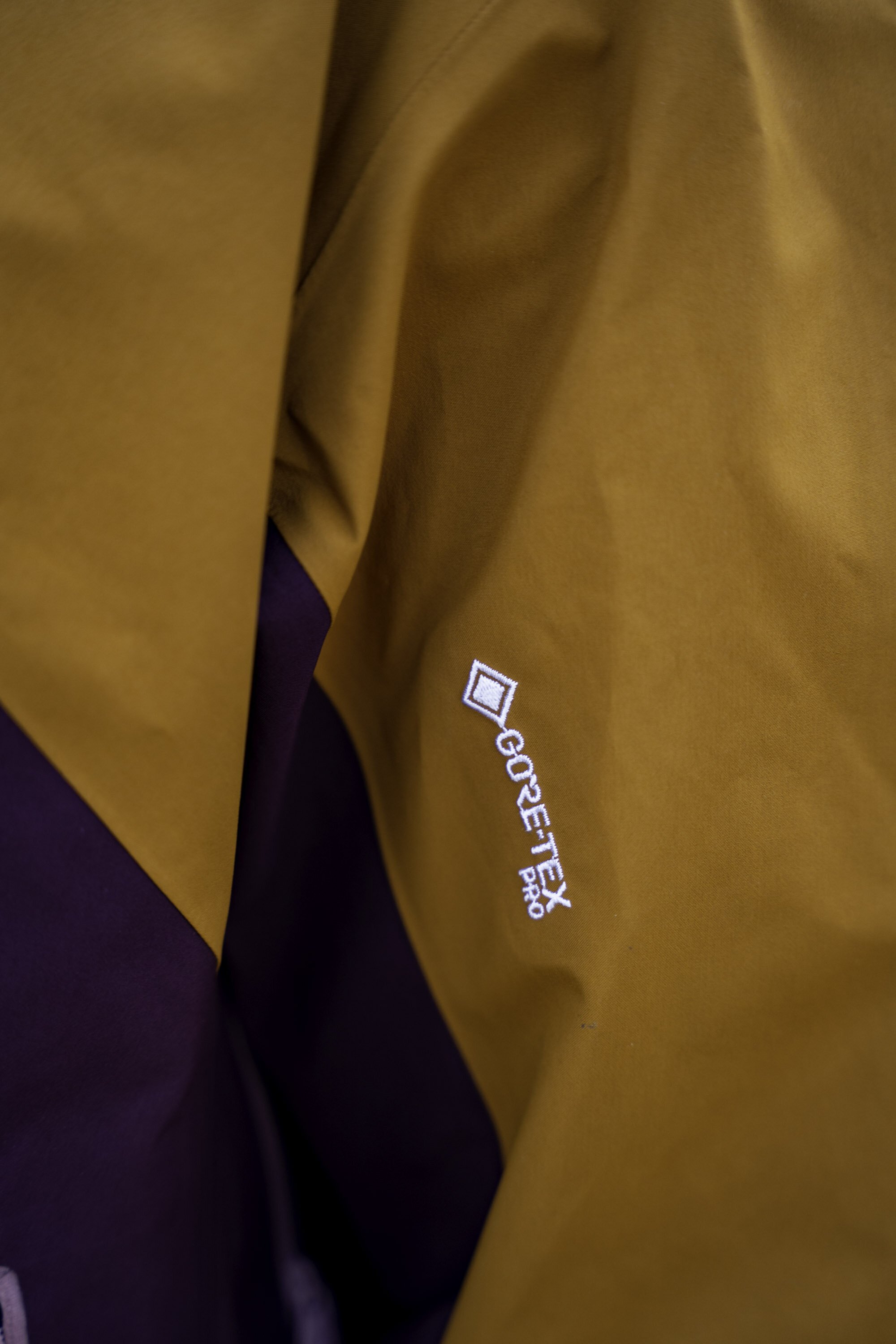
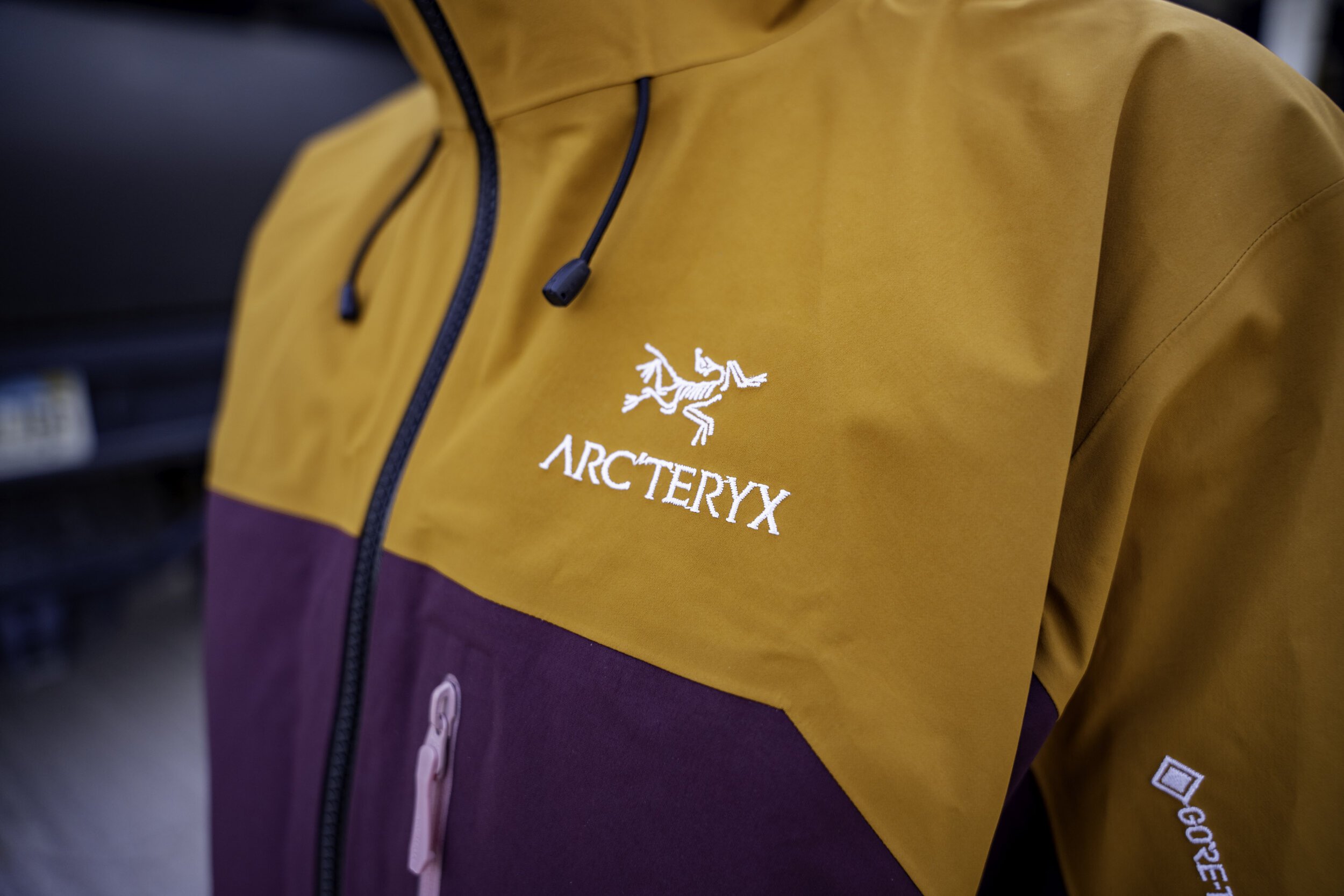
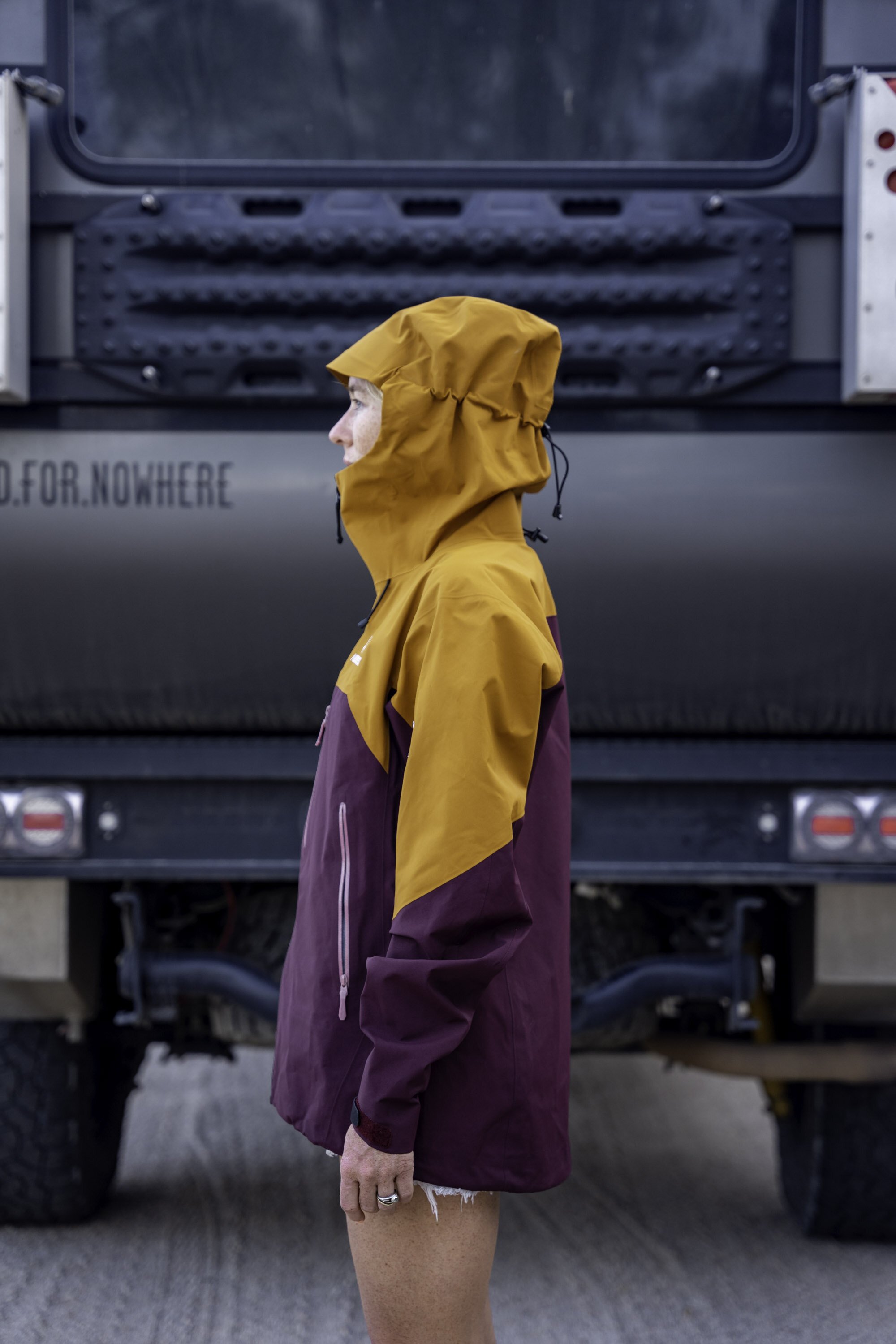
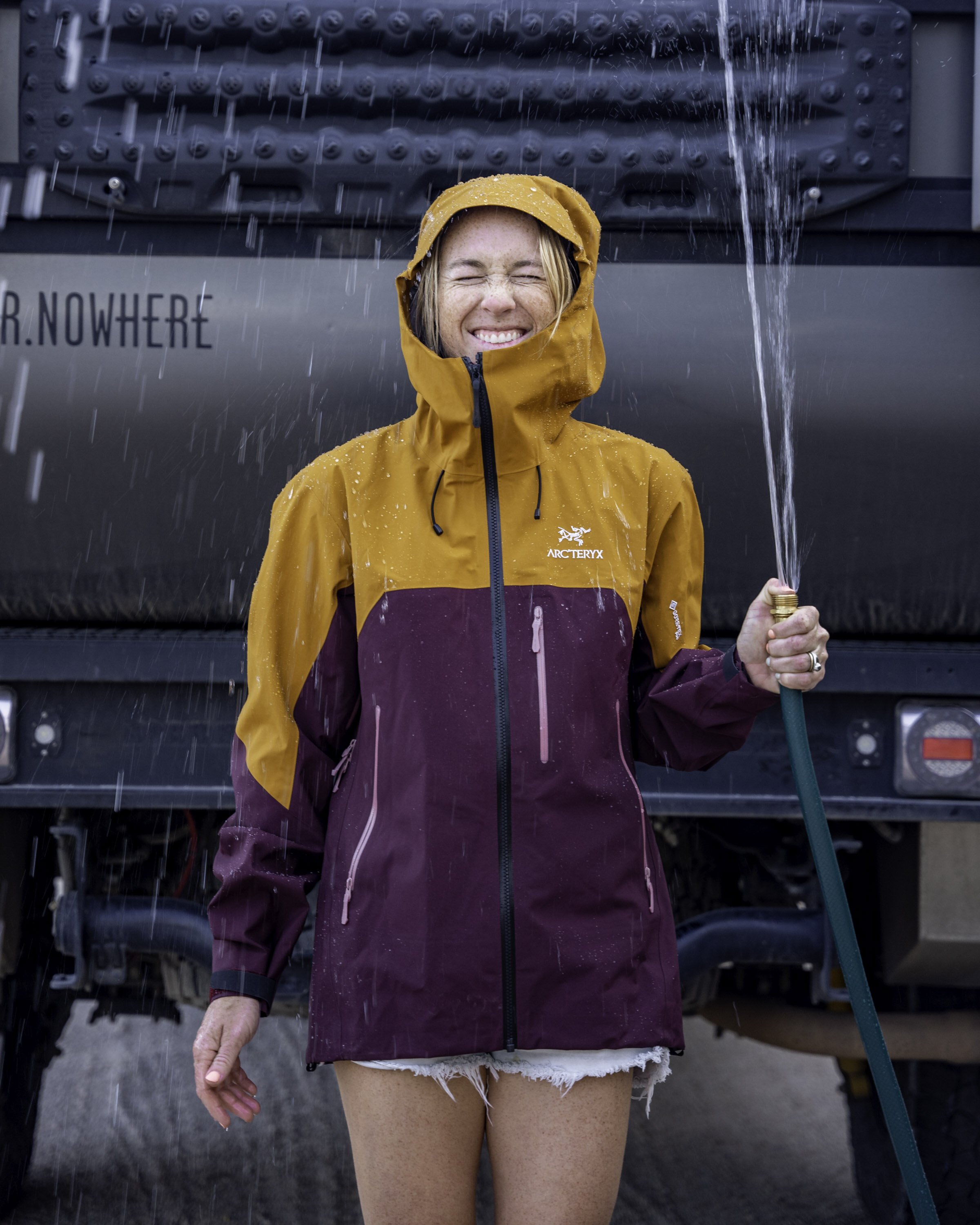
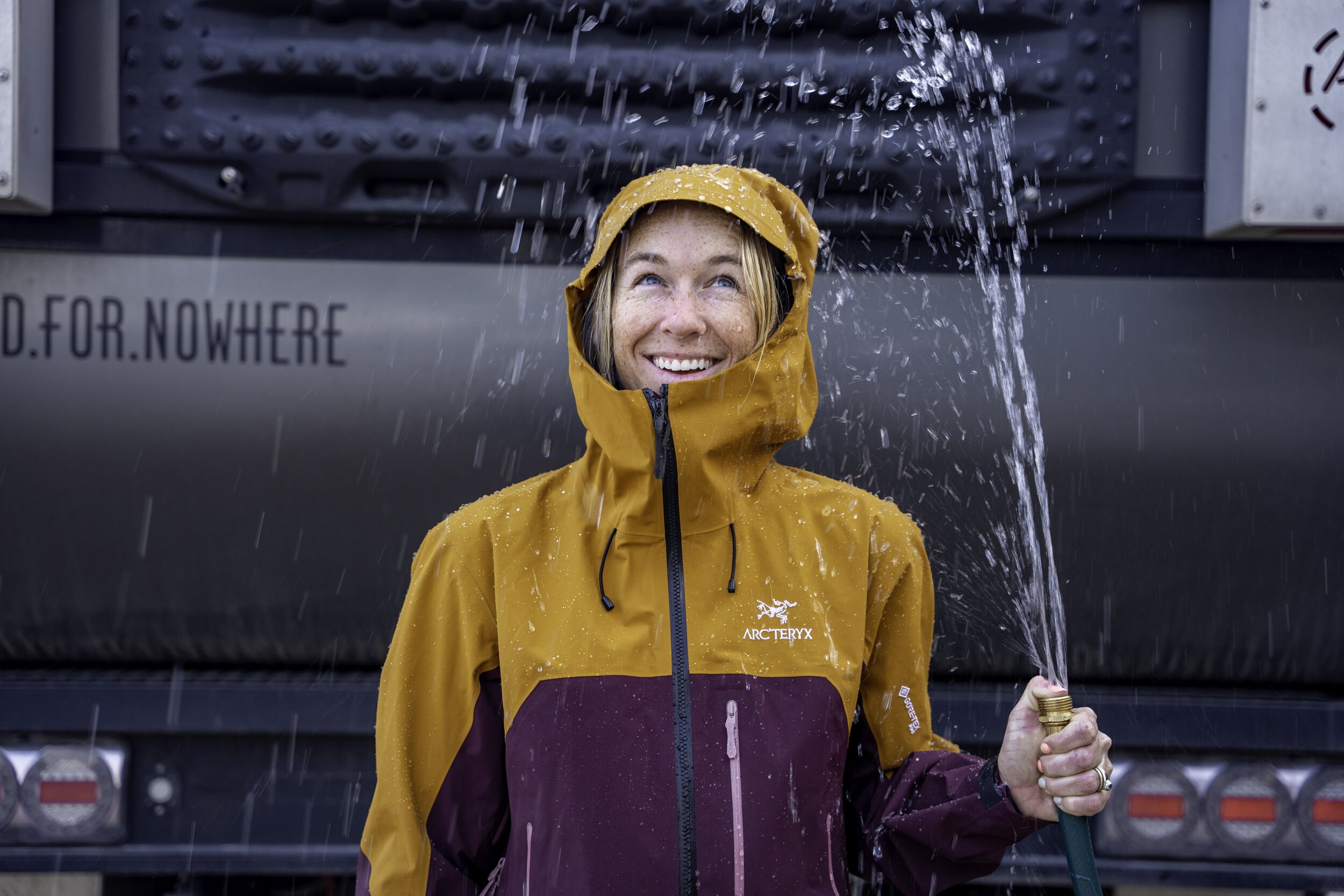

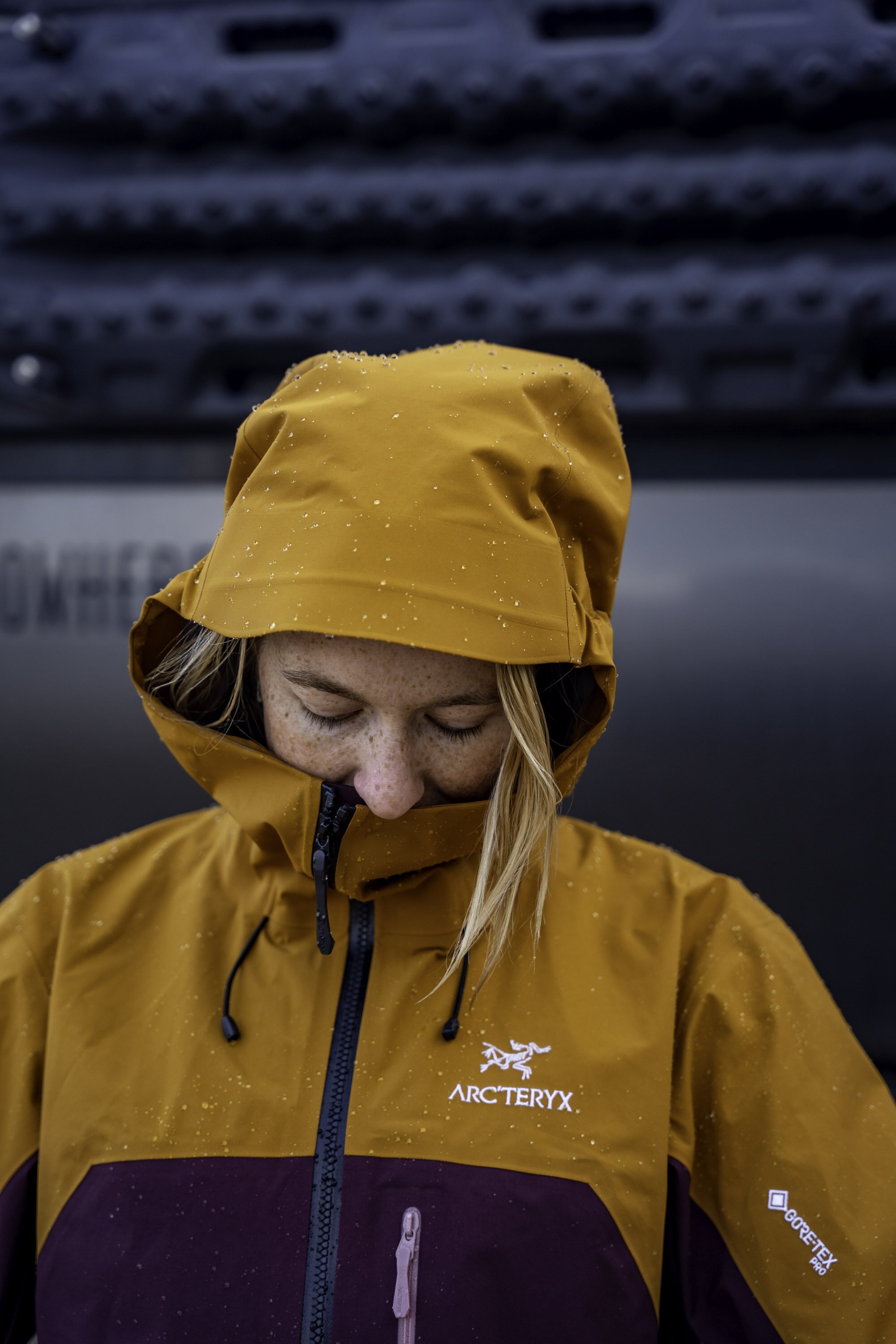
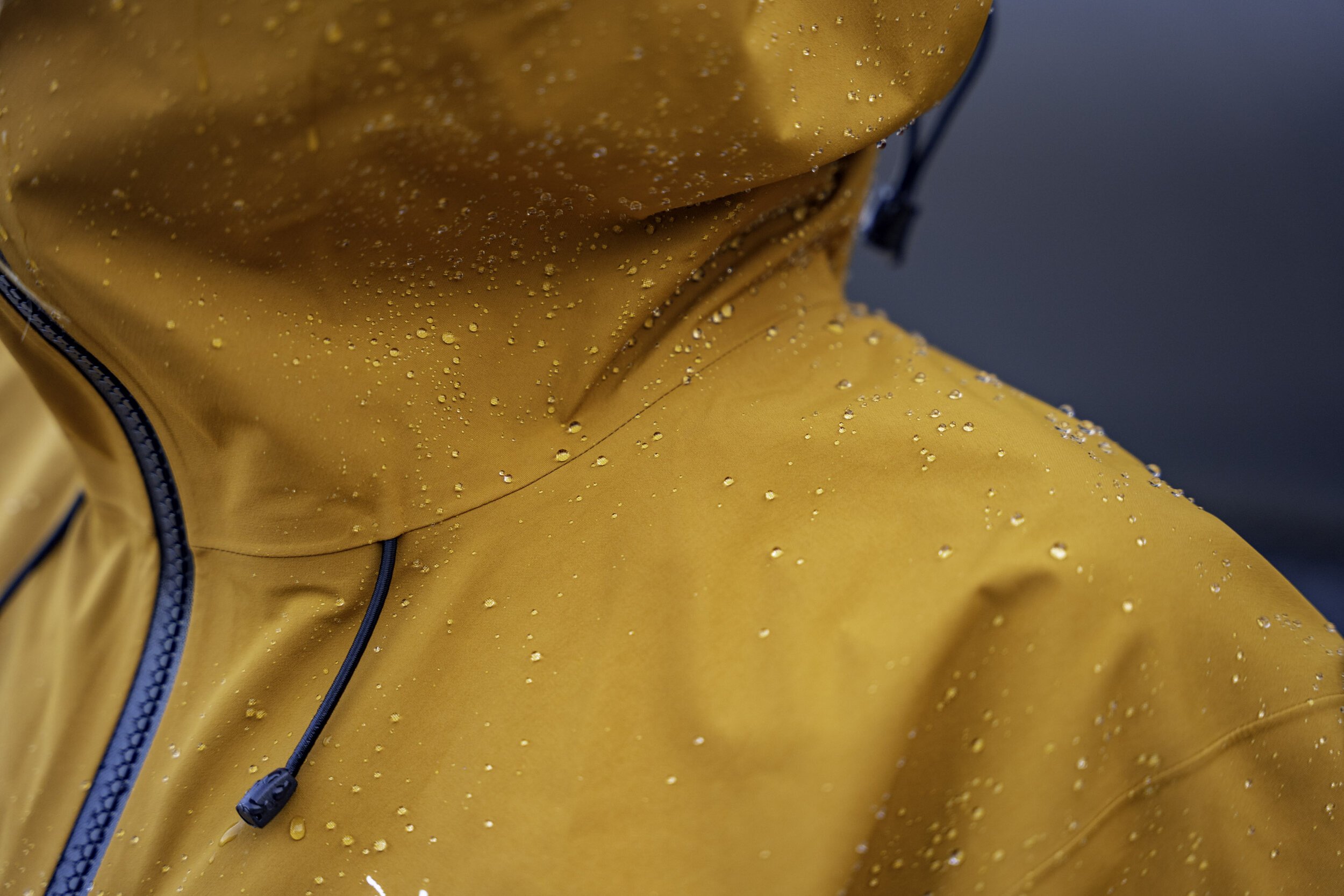
Though I’ve only worn it for a few hours thus far, I love it and know that we will have lots of adventures together. To test it out in the desert I took it outside and sprayed myself down with a hose. I can confirm it is very waterproof! The water just beads up and rolls right off. I love the longer length of it so it can still easily be worn with a pack that has a hip belt. If you are not going to spend a ton of time in severe weather I recommend the Beta AR!
This time, I promise that I will take better care of it, so it will take better care of me for many years to come!
Even though this deep dive into rain jackets/hard shells was spurred on by a scary experience, I’m thankful it happened because of how much I’ve learned from it. Hopefully, you can learn from my experience too, and be dry on your adventures in the future! If you have any more jacket suggestions (and why) toss them in the comments to give our little community here more options to look into in their own quest for the perfect rain jacket for them.
Thanks for reading and stay dry out there!
MAK












